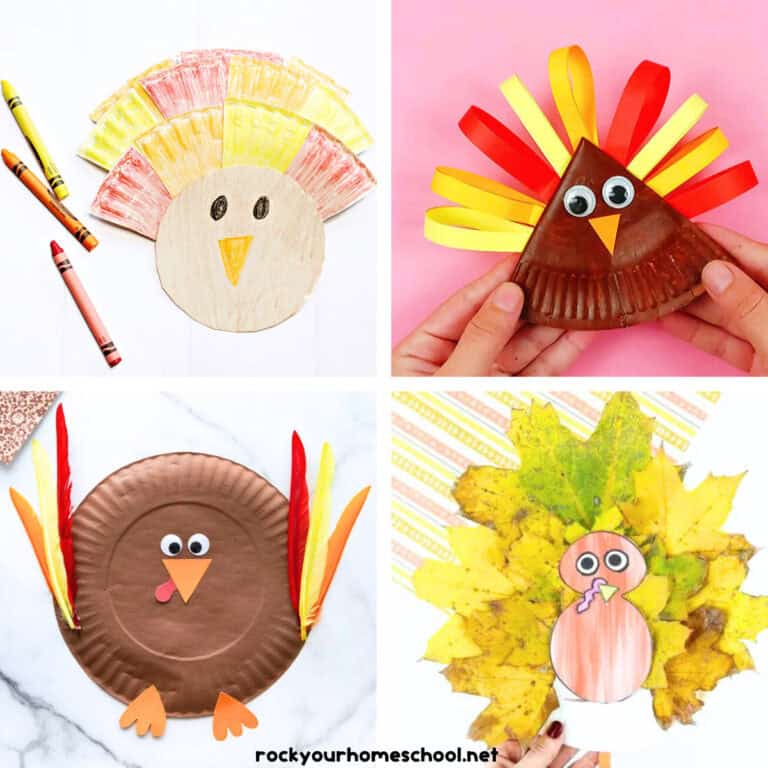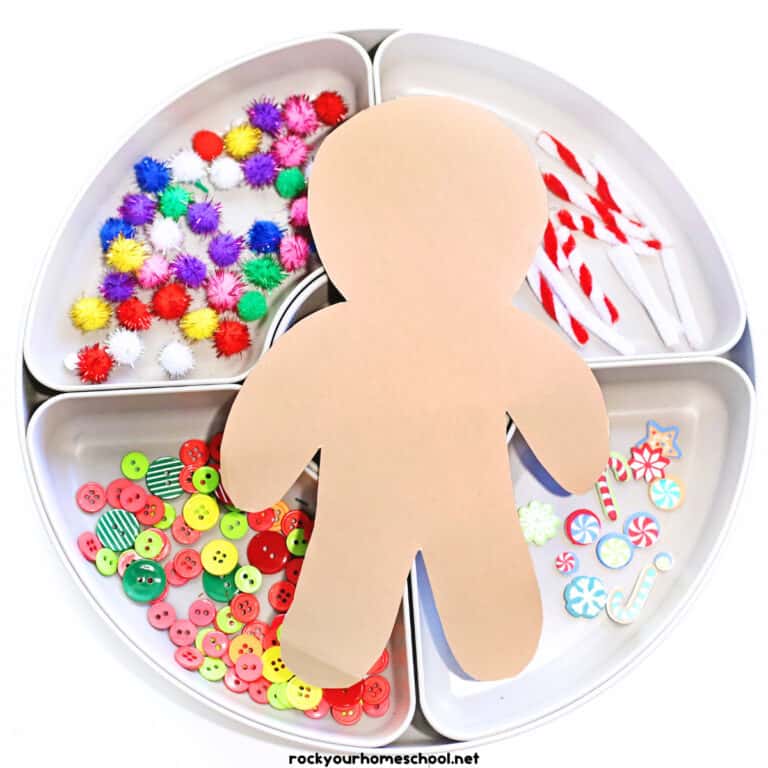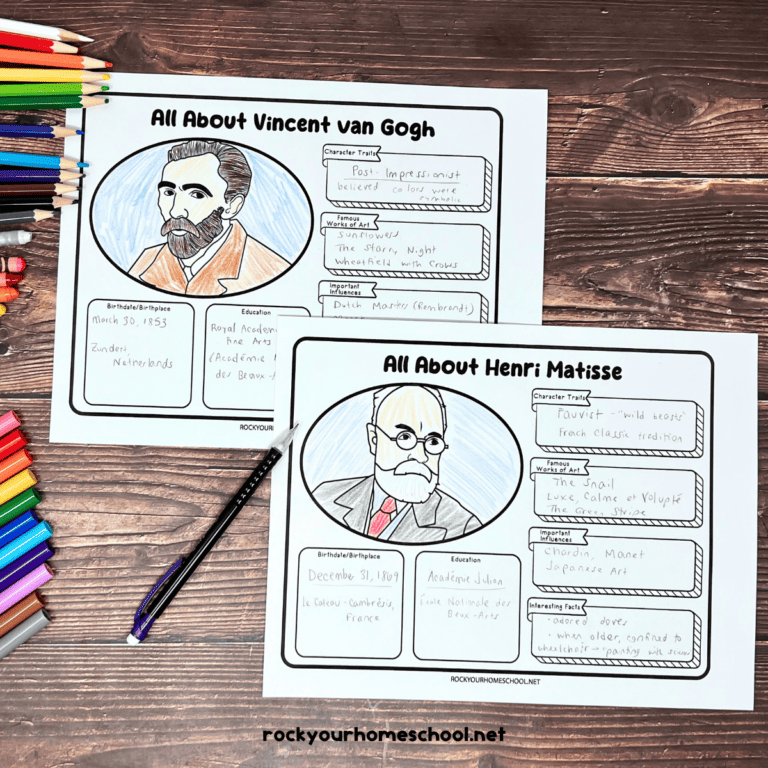This watermelon activity for kids is wonderful for STEM summer fun and more.
If you’re looking for a super cool way to sneak in some hands-on learning fun this summer (and beyond), this DIY watermelon seed catapult project is perfect. With just a few simple supplies (popsicle sticks and rubber bands), your kids can build their very own mini-launcher for watermelon seeds. So much fun for a picnic, family event, and camp!
I have creative tips and ideas for making and using. Plus, I’m sharing step-by-step instructions and pictures. My boys and I had a blast with this STEM activity and we hope that you and your children do, too.
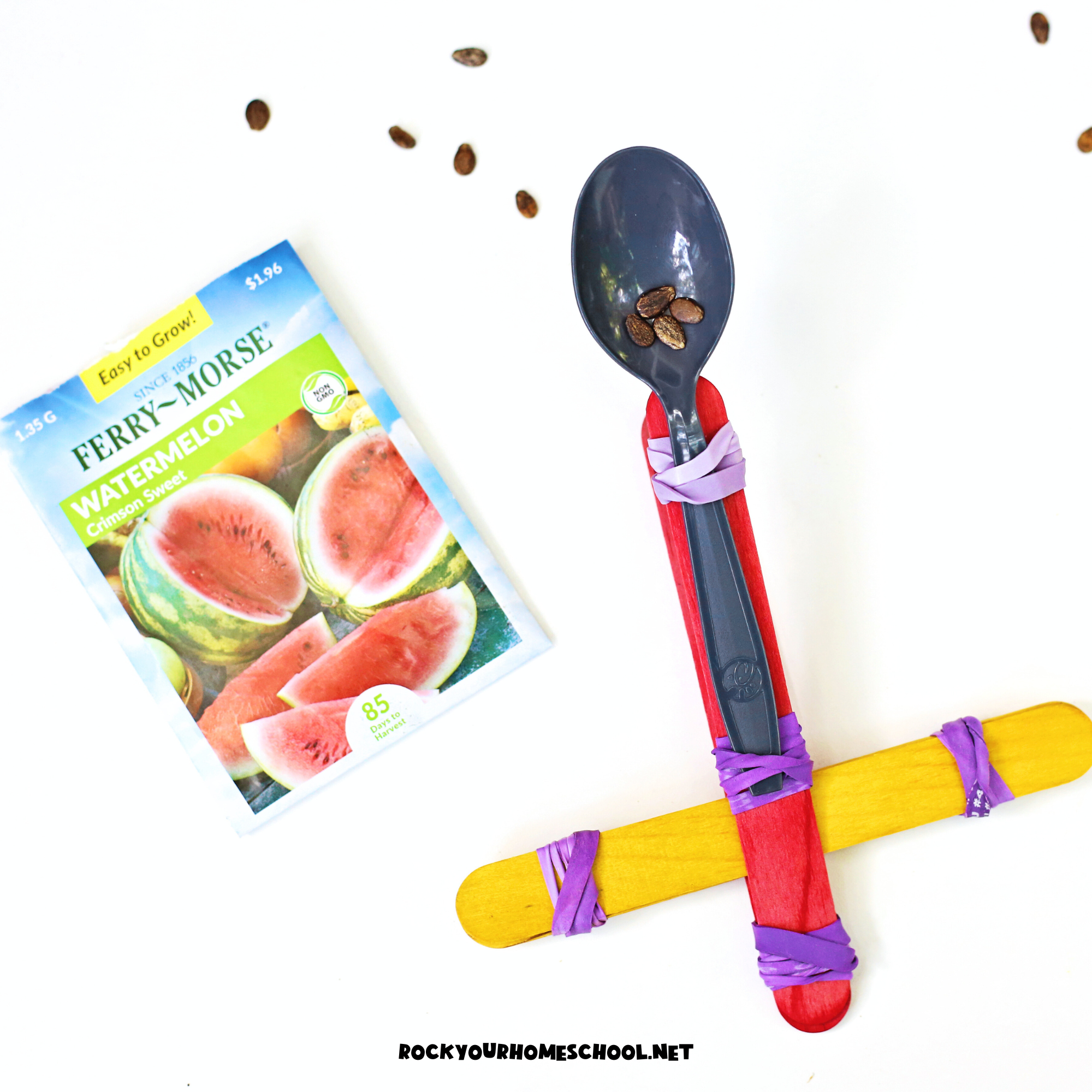
Watermelon + STEM = A Whole Lot of Learning Fun!
After my boys and I made our first DIY STEM catapult, the creative ideas really started flying! Once they saw how fun it was to launch tiny objects, their imaginations kicked into high gear.
We started brainstorming all the things we could try launching next. Of course, there were some absolutely ridiculous suggestions (someone mentioned an elephant which led to a hilarious conversation about how big the popsicle sticks would need to be).
Then, my middle boy had a lightbulb moment: Seeds! The boys started tossing out ideas like pumpkin seeds, sunflower seeds, and watermelon seeds.
And just like that, we were off on another STEM adventure. We recreated our catapults and tested their ideas for how to best launch their seeds. The boys wanted to see how far and how high they could get their watermelon seeds to go. It turned into such a fun way to explore STEM concepts for kids like tension, force, and measurement.
What You’ll Need to Build Your Watermelon Seed Catapult
You don’t need anything fancy to make this watermelon seed catapult. You’ll want these basic supplies plus watermelon seeds. This project is quick to prep and super budget-friendly.
Since I usually buy seedless watermelon, I picked up an inexpensive pack of watermelon seeds to use. If you like seeded watermelon, you’ll be all set – just make sure to save those seeds! Oh, and this list of supplies is for each catapult that you want to make. If you’re making multiple catapults, make sure to take that into consideration.
- 6 jumbo popsicle sticks
- 1 plastic spoon
- 5 rubber bands
- Watermelon seeds

How to Make Your STEM Catapult for a Fun Watermelon Activity for Kids
Make the Base and Prepare the Spoon Arm:
Stack 4 jumbo popsicle sticks on top of each other. Wrap a rubber band tightly around each end to secure the stack.
Place the plastic spoon on top of one jumbo popsicle stick.
Use two rubber bands to attach the spoon securely to the end of the stick (the spoon should stick out a bit past the edge).

Create the Lever and Assemble the Catapult:
Take the spoon stick and another single popsicle stick. Attach them together at one end only using a rubber band. This forms the moving arm of your catapult.
Carefully slide the stack of 4 sticks between the two sticks, pushing it toward the end with the rubber band. The stack should rest perpendicular to the lever arm, creating tension.

Launch Your Seeds:
Place a watermelon seed on the spoon. Hold down the base, pull back the spoon, and let go to launch!
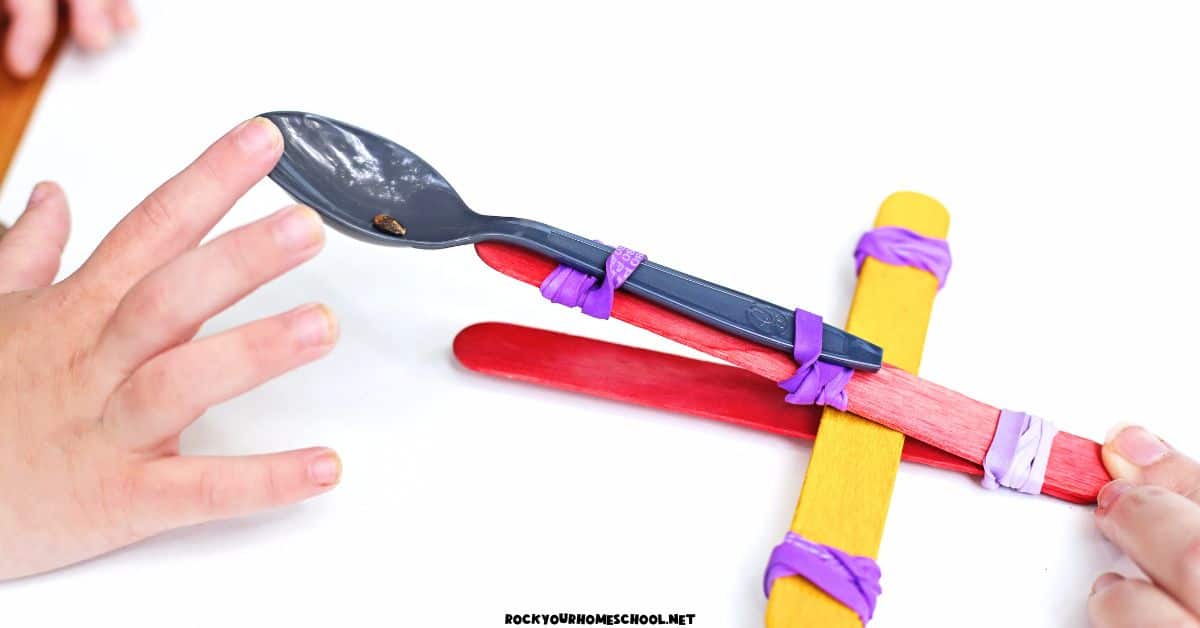
Frequently Asked Questions About This Watermelon Seed Catapult
This STEM project is great for kids in early elementary and up. Younger kids may need a bit of help with rubber bands, but they’ll love launching seeds and making predictions. Older kids can dig deeper into the science behind it.
Absolutely! We’ve tried pumpkin seeds, sunflower seeds, dried beans, and even mini pom-poms. It’s a great chance to experiment with different weights and sizes to see what flies farther.
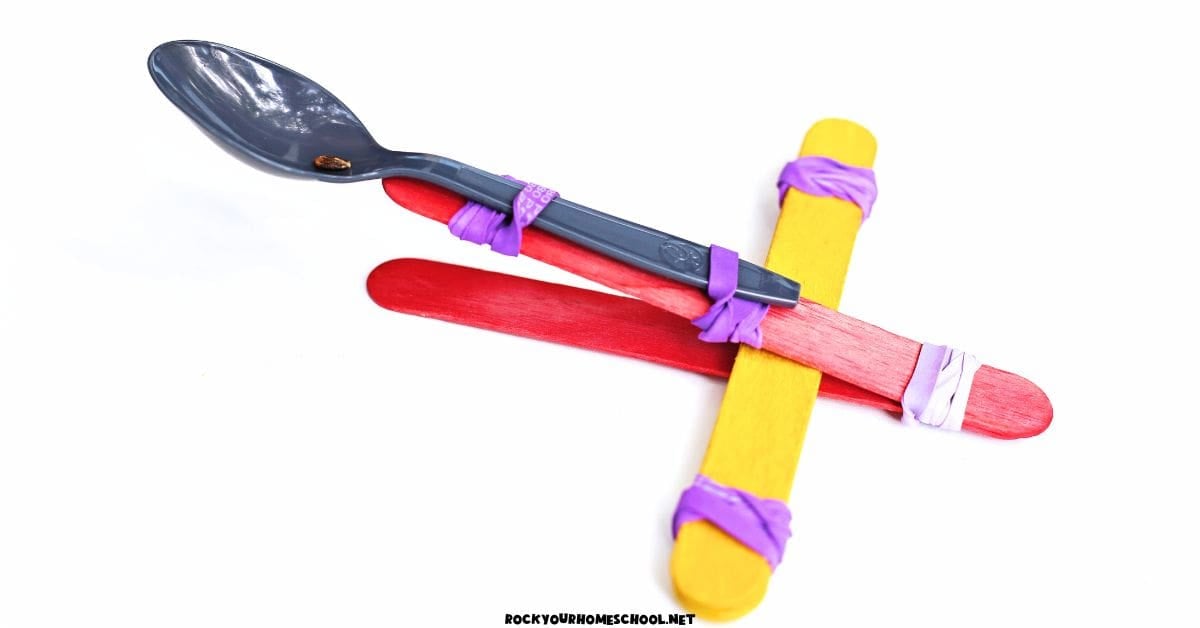
Creative and Educational Ways to Enjoy This Watermelon Activity for Kids
When your watermelon seed catapult is built, you can totally keep the fun going. There are so many simple ways to extend this activity in creative and educational ways. Here are some of our favorite ideas for this summer STEM project:
- Target Practice Challenge: Set up simple targets using paper plates, cups, or sidewalk chalk circles. Assign point values. Then, practice addition, subtraction, or skip counting as kids add up their scores.
- Distance Measurement Math: Use a ruler or tape measure to see how far each seed travels. Record the distances.
- Change Variables: Enjoy more STEM fun by testing different materials (like pumpkin seeds or mini pom-poms) and have kids make predictions. What travels the farthest? Why? You can also change the build of the catapult and compare results.
More Fruity Summer Fun for Kids
Fruit themes for summer activities are sensational ways to have some fun and sneak in some learning. You can find these ideas and resources here on Rock Your Homeschool:
- Lemonade craft (with lemon stamping)
- Paper plate watermelon fan craft
- Lemon printables (free activities pack)
- Watermelon stamp craft using a pool noodle
- Easy homemade watermelon playdough
I would LOVE to hear your ideas for building and using this STEM catapult for a watermelon activity for kids. Please let me know in the comments area below (as well as any questions you have).







